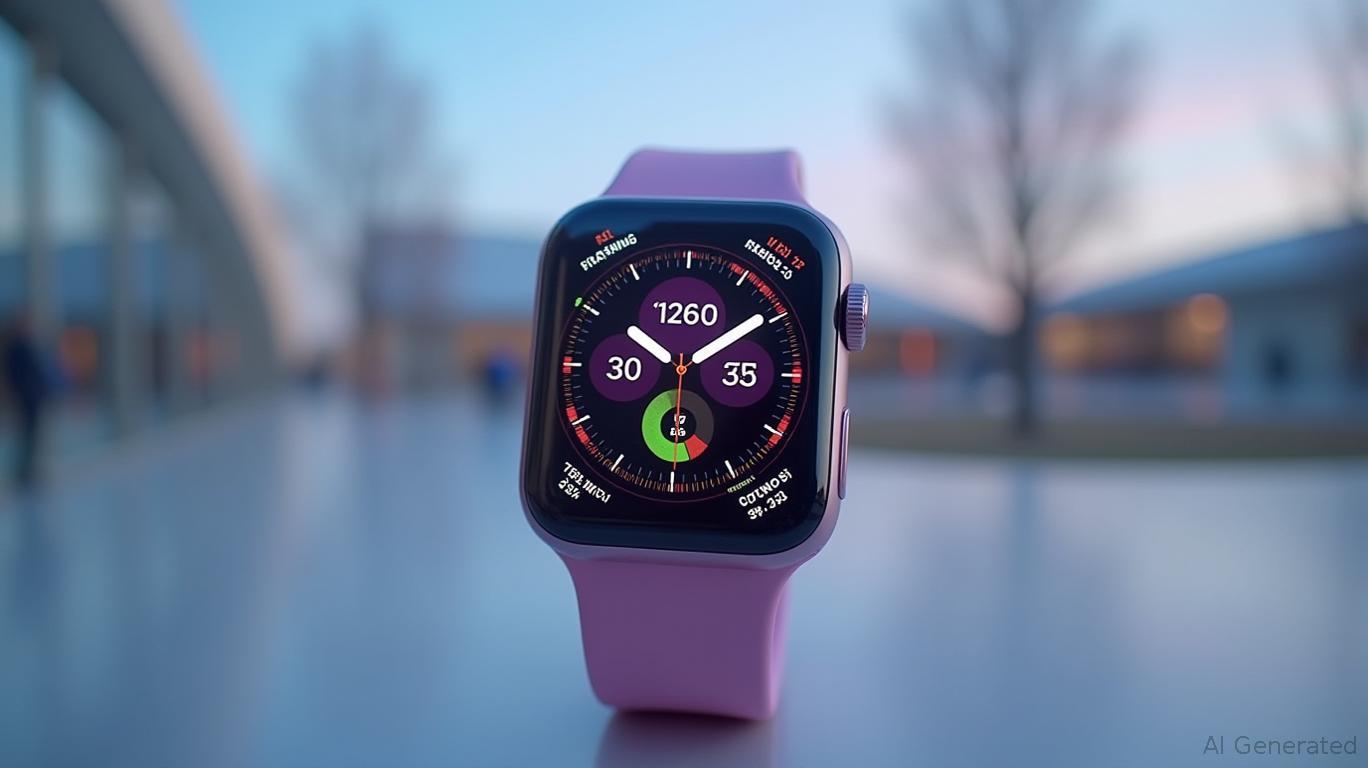The Pulse of Innovation: Apple's watchOS 26 and iOS 26 as Catalysts for Health-Tech and AI Dominance
Apple's upcoming watchOS 26 and iOS 26 updates are not merely software upgrades—they are strategic moves to solidify the company's position at the intersection of health technology and AI-driven personalization. With enhancements ranging from blood pressure monitoring to ecosystem-wide AI integration, these updates signal Apple's ambition to dominate both consumer tech and healthcare markets. For investors, this presents a rare opportunity to capitalize on a convergence of trends: the digitization of health data, the rise of AI as a service, and Apple's unparalleled ecosystem cohesion.

Health-Tech as a Strategic Growth Lever
The inclusion of blood pressure monitoring in the
Watch Series 11 and Ultra 3 models marks a pivotal shift. While regulatory hurdles remain—for example, gaining FDA approval for medical-grade accuracy—Apple's track record of iterative improvements (e.g., sleep apnea detection retrofitted to older models) suggests a long-term play. By embedding health features deeply into its wearable hardware and software, Apple is positioning itself as a trusted guardian of personal health data. This creates a flywheel effect: more users adopt Apple Watches for health tracking, generating richer datasets that refine AI models, which in turn attract third-party developers to the ecosystem.Investors should note the monetization potential here. Partnerships with health insurers, pharmaceutical companies, and telehealth providers could unlock recurring revenue streams. For instance, data aggregated from millions of users could inform personalized drug trials or preventive care programs. already hints at the market's confidence in Apple's ability to monetize such data ethically—a critical edge in an era of strict privacy regulations.
AI as the Engine of Personalization
Apple's “Liquid Glass” UI overhaul and AI-driven tools like the enhanced Siri platform underscore a broader vision: an ecosystem where intelligence is embedded at the OS level. On-device AI processing not only preserves privacy but also enables seamless cross-device experiences. For example, the new Apple Intelligence could analyze workout patterns, sleep cycles, and stress levels to provide hyper-personalized recommendations—turning the Apple Watch into a “digital health concierge.”
This shift also lowers the barrier for third-party developers. By opening tools to integrate Foundation Models into apps like Photos or Fitness, Apple fosters an ecosystem where AI innovation becomes democratized. For investors in AI infrastructure or health-tech startups, this signals a platform play: Apple's ecosystem could become the default launchpad for AI-driven consumer services.
Ecosystem Cohesion: The Unseen Competitive Moat
Apple's decision to unify design language across all platforms (iOS 26, watchOS 26, macOS 26 Tahoe) is more than aesthetics—it's a strategic move to lock users into the ecosystem. A cohesive interface reduces friction for users transitioning between devices, while shared data pipelines (e.g., health metrics flowing from Watch to iPhone to Mac) create network effects.
Hardware compatibility nuances are equally telling. While older models may miss out on blood pressure features, Apple's phased rollout ensures that only users of the latest devices (and, by extension, newer iPhones) benefit fully. This incentivizes upgrades, driving hardware sales and ensuring a steady flow of fresh data into Apple's systems.
Risks and Considerations for Investors
Regulatory challenges loom large. Health features like blood pressure monitoring must navigate FDA scrutiny, and privacy concerns could limit data monetization. Additionally, AI's reliance on hardware means older devices may lag behind, potentially fragmenting the user base.
However, Apple's strengths—its brand loyalty, engineering prowess, and vertically integrated supply chain—mitigate these risks. The company's focus on on-device AI processing also sidesteps some privacy pitfalls, aligning with global trends toward localized data handling.
Investment Thesis: Why Stakeholders Should Pay Attention
For investors in digital health, Apple's move into clinical-grade monitoring opens doors to partnerships with healthcare institutions. For AI-focused funds, the democratization of Foundation Models on Apple's ecosystem could yield outsized returns from niche apps or services. For consumer tech stakeholders, the hardware-software synergy (e.g., the Series 11 launch in September) suggests sustained growth in wearable sales.
Apple's ecosystem now functions as a self-reinforcing loop: better health data fuels AI innovation, which in turn drives user engagement and premium pricing power. The September 2025 hardware launch, paired with the OS updates, is a critical inflection point. Investors who bet on Apple's vision here are not just buying software—they're investing in the infrastructure of tomorrow's personalized health and AI economy.
Final Take: Apple's watchOS 26 and iOS 26 are more than updates—they're a blueprint for owning the future of health-tech and AI personalization. For stakeholders willing to ride this wave, the rewards could be transformative.

Comments
No comments yet